Mena pushes for nuclear future
2 August 2023

The Middle East and North Africa (Mena) region is set to register a rise of at least 30 per cent in power generation capacity by 2030 due to population growth and industrial expansion.
The rapid increase requires a strategy to advance energy security while reducing carbon emissions and fossil-fuel dependence, creating strong interest in nuclear power and renewable energy.
Iran has a 1GW nuclear plant in Bushehr and construction is under way for a second 300MW reactor in Khuzestan.
In the UAE, three of the four 1.4GW reactors at the GCC region’s first multi-unit nuclear power plant in Barakah, Abu Dhabi, are now connected to the electricity grid.
Egypt, in partnership with Russia’s Rosatom, is building its first nuclear power plant in El-Debaa.
Riyadh, meanwhile, tendered the contract to build its first large-scale power plant in Duwaiheen last year.
Beyond the GCC, Jordan has announced the production of 20 kilograms of yellowcake from 160 tonnes of uranium ore at a newly operational processing facility, while Morocco has completed a study supporting a plan to go nuclear.
Alternative base load
Apart from Saudi Arabia, these countries have significant renewable capacity as of 2023. All aim for renewables to account for up to half of installed capacity by the end of the decade.
Nuclear is seen as an alternative base load to thermal capacity to counter the intermittency of renewables in the absence of viable storage solutions. This has helped build the case for adding nuclear to the energy mix – although, in the UAE, the Barakah plant predated the renewable energy programme.
The decarbonisation potential of nuclear may be overstated, however, says a leading regional expert on utility projects.
“We should use all available clean-carbon solutions to decarbonise all industrial and human consumption and endeavour,” says Paddy Padmanathan, former CEO of Saudi utility Acwa Power. “Clearly we need to decarbonise as soon as possible.”
The rate at which the residual carbon budget is being consumed implies that even zero emissions by 2050 will not be sufficient, according to the executive. This begs the question: Which technologies will deliver solutions at scale to quickly achieve decarbonisation.
Nuclear power plants, which – with the exception of Abu Dhabi’s Barakah – have struggled to be delivered on time and within budget, may not be a viable solution, says Padmanathan, who now sits on the board of the UK energy startup Xlinks and green hydrogen firm Zhero.
He says nuclear power plants outside China have taken twice as long to build than planned and have typically cost more than twice their budget. Such capital expenditure and long construction times mean nuclear may only make sense if you have lots of spare cash, he adds.
Hence it is unwise to factor in nuclear to plans to decarbonise power generation by 2050, Padmanathan argues. “We already have much – if not all – the technologies to get the job done,” he notes, referring to renewable energy and battery storage solutions, among others.
He continues: “One cannot bank on such a rare outlier as Barakah, which got completed with only a marginal increase in cost and time, and rely on nuclear to deliver any meaningful level of flexible base load.”
Saudi programme
Budget availability and the urgency of decarbonisation aside, other factors complicate nuclear projects in the region, particularly in Saudi Arabia.
The kingdom’s nuclear energy programme dates back to 2010 with the creation of King Abdullah City for Atomic & Renewable Energy (KA-Care). In 2021, KA-Care invited consultancy bids for its first large-scale nuclear power project in Duwaiheen, close to the Qatar border. It awarded the financial, legal and technical advisory services contracts last year.
In October 2022, Riyadh issued the request for proposals for the main contract to Russian, South Korean, Chinese and French firms.
Earlier this year, it formed the Saudi Nuclear Energy Holding Company, which plans to develop nuclear power plants as early as 2027 to produce electricity and to desalinate seawater, as well as for thermal energy applications.
Most recently, the state offtaker Saudi Power Procurement Company floated a tender for advisers to help prepare and review project agreements related to the procurement of electricity from Saudi’s first nuclear power plant, raising further speculation about the nuclear project.
The Saudi programme, particularly the kingdom’s plans to mine uranium as part of its economic and industrial strategy, is a thorn in Washington’s side. It is understood to have been a key theme in discussions when US President Joe Biden visited Riyadh last year.
Washington is wary of the nuclear power plant contract being awarded to Chinese or Russian contractors, not only because this could drive Riyadh closer to geopolitical rivals of the US, but also because it weakens US demands for Riyadh to abandon its nuclear fuel cycle ambitions before signing any bilateral nuclear cooperation agreement (NCA), otherwise known in Washington as a 123 agreement.
Uranium has to be enriched to up to 5 per cent for use in nuclear power plants and to 90 per cent to become weapons-grade. According to an Energy Intelligence report, the stalemate between Washington and Riyadh centres around US demands for Saudi Arabia to commit to the NCA and not pursue a domestic uranium enrichment or reprocessing programme.
The US also wants the kingdom to sign and ratify the International Atomic Energy Agency’s (IAEA) Additional Protocol, allowing nuclear inspectors fuller access to Saudi Arabia’s nuclear programme.
The report alludes to the US supporting South Korean contractor Kepco’s bid to develop the nuclear plant because it provides Washington with a final lever for pressuring Riyadh to accept its conditions for the 123 agreement and IAEA protocol.
Done deal
Biden’s visit did not produce material results, although unconfirmed reports say he may have given his blessing to the project, while others argue Riyadh did not need it.
“I think, in the end, this is a done deal, meaning that Saudi Arabia will pursue a nuclear energy programme,” says Karen Young, a senior research scholar at the Centre on Global Energy Policy at Columbia University in the US.
“They will pursue domestic uranium mining and likely enrichment, and we will see a more global ramp-up of nuclear energy use – and also, over time, possibly areas of proliferation in security uses not just in the Mena region, but across a wide geography.”
The US can either take solace from the fact that it takes time to develop a nuclear project, or it can – if it is not too late – revisit its relationship with Saudi Arabia, especially in the wake of a rapprochement between Tehran and Riyadh under a deal brokered by China.
“Moving into design and procurement phases … whether with Russian, Chinese or South Korean [firms] … heightens already sensitive notions of strategic competition in the Gulf, as the US understands it,” notes Young.
In hindsight, it appears the US government has under-appreciated the seriousness of the Saudi plan or the importance of localised industry and mining as a domestic economic and security interest.
“Saudi Arabia sees an opportunity to play the US against its other options, so this is a unique moment of bargaining in which the nuclear file can be traded against broader foreign policy priorities for the Saudi leadership,” Young says.
Russian conundrum
The Barakah nuclear process, which entailed Abu Dhabi signing a 123 agreement with Washington, is seen as a gold standard. Emirates Nuclear Energy Company (Enec) signed supply contracts with France’s Areva and Russia’s Tenex for the supply of uranium concentrates and for the provision of conversion and enrichment services.
It then contracted Uranium One, part of Russia’s Rosatom, and UK-headquartered Rio Tinto for the supply of natural uranium for the plant. US-based ConverDyn provided conversion services, while British firm Urenco provided enrichment services.
The enriched uranium was supplied to Kepco Nuclear Fuels to manufacture the fuel assemblies for use at the Barakah nuclear power plant.
Fuel supply, processing, removal and storage are now complicated by Russia’s conflict and its global reputation, notes Young. The reference to Russia is important, given that Iran has provided drones to the country for use in its war with Ukraine, in exchange for the sale of advanced military equipment and cyber warfare. This is seen as a direct threat to Opec ally Riyadh.
The Tehran-Riyadh rapprochement only makes sense from a viewpoint where a dead Iran nuclear deal could expedite the Islamic Republic’s plan to build a bomb, potentially leading to a nuclear arms raise in the region, which everyone – particularly the two countries’ biggest client, China – would rather avoid.
Despite these complexities, the regional and global push to build nuclear capacity following the invasion of Ukraine and the threat to global gas supplies does not appear to be slowing.
The UAE, for instance, has partnered with the US to mobilise $100bn to support clean energy projects at home and abroad, and has pledged $30bn for energy cooperation with South Korea. Both these commitments involve significant investments in renewable and civilian nuclear energy projects.
This suggests that nuclear as a clean energy option is here to stay, despite mounting costs and geopolitical risks
Unfortunately, however, in a region marked by perennial instability, there are few incentives for the involved countries to be more transparent about their programmes.
While the evolving rapprochement between countries that have previously considered each other existential threats might not eliminate the spectre of a nuclear arms race, it can defuse tensions in the interim while helping push decarbonisation agendas.
Exclusive from Meed
-
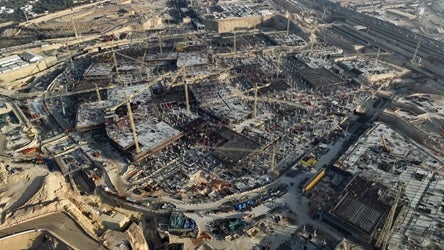 Webuild wins $600m Diriyah Square project deal
Webuild wins $600m Diriyah Square project deal14 July 2025
-
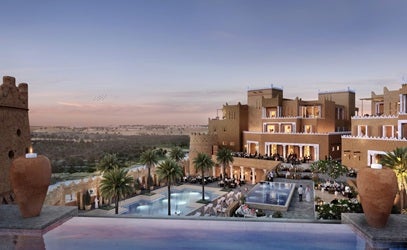
-
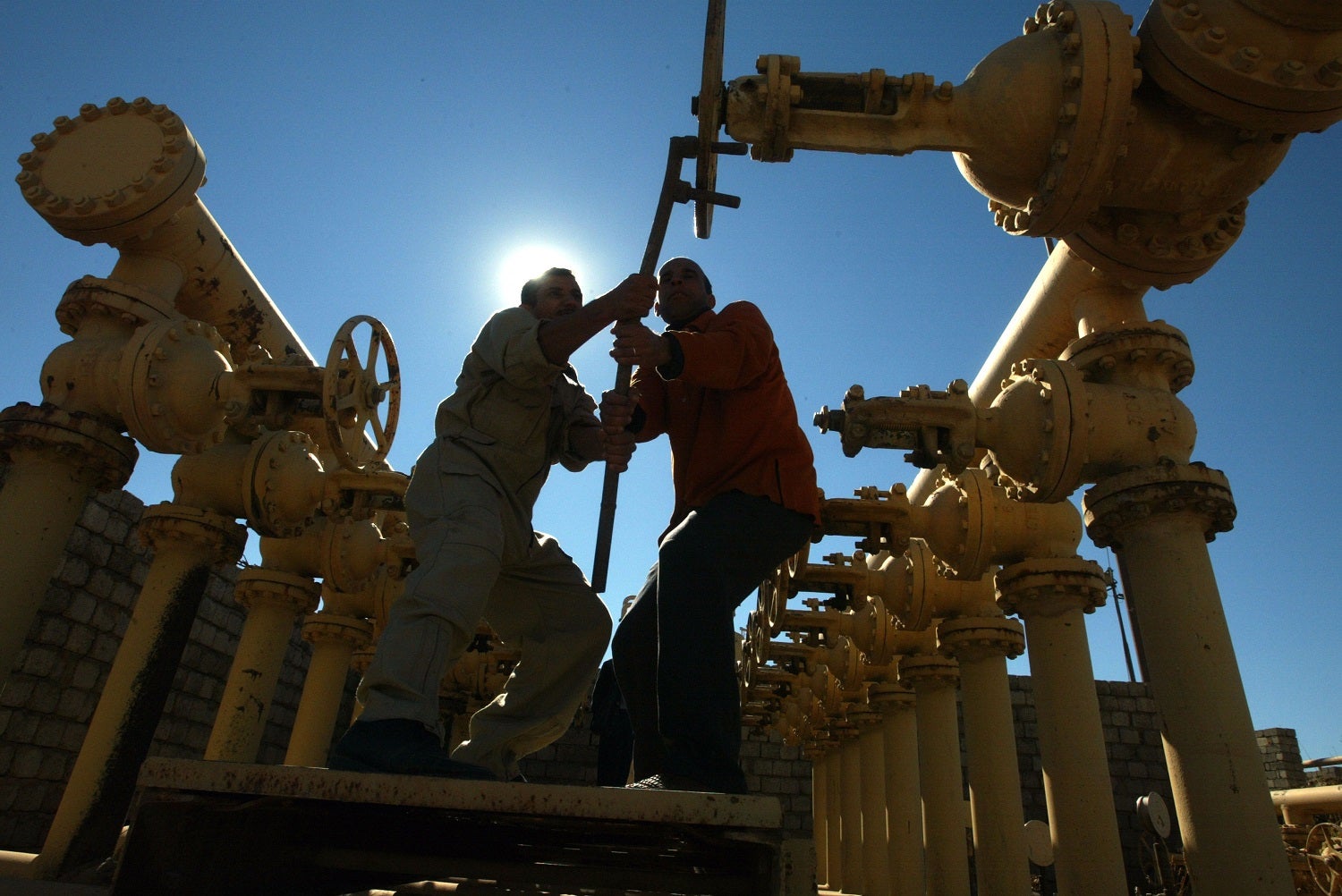 Penspen to expand workforce in Neutral Zone
Penspen to expand workforce in Neutral Zone14 July 2025
-
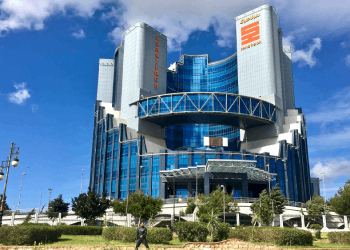 Eni signs $1.35bn Algerian oil and gas deal
Eni signs $1.35bn Algerian oil and gas deal14 July 2025
-
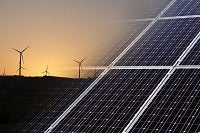
All of this is only 1% of what MEED.com has to offer
Subscribe now and unlock all the 153,671 articles on MEED.com
- All the latest news, data, and market intelligence across MENA at your fingerprints
- First-hand updates and inside information on projects, clients and competitors that matter to you
- 20 years' archive of information, data, and news for you to access at your convenience
- Strategize to succeed and minimise risks with timely analysis of current and future market trends

Related Articles
-
 Webuild wins $600m Diriyah Square project deal
Webuild wins $600m Diriyah Square project deal14 July 2025
Italian contractor Webuild has announced that it has won a $600m contract from Diriyah Company for a package for the Diriyah Square project.
The contract relates to construction works on package three of the Diriyah Square project. It involves the finishing and mechanical, electrical and plumbing works on more than 70 buildings and public spaces within Diriyah Square.
These assets cover a total area of about 365,000 square metres.
Webuild is already working on the underground multi-storey car park at Diriyah Square.
The three-floor underground car park will serve the mixed-use Diriyah Square district, which will include leisure and entertainment, hotels, retail, grade A offices, the King Salman Grand mosque and residential units designed in the traditional Najdi architectural style.
The car park has a floor area of 1 million square metres, with underground roads and tunnels below Diriyah Square, and a capacity for 10,500 cars.
The parking facility will directly connect commuters with all of Diriyah’s destinations, including Wadi Hanifah, the Western Ring Road and a national motorway. It will be a key component of the City of Riyadh Arterial Road system.
In an official statement on its website, Webuild said that the construction works on the car park are 55% completed.
MEED reported in January 2021 that Diriyah Company had selected Webuild for the super basement car park at the Diriyah project in Riyadh.
Diriyah gigaproject
The Diriyah masterplan envisages the city as a cultural and lifestyle tourism destination. Located northwest of Riyadh’s city centre, it will cover 14 square kilometres and combine 300 years of history, culture and heritage with hospitality facilities.
The company awarded several significant contracts last year, including three contracts worth over SR21bn ($5.5bn). These included an estimated $2bn contract awarded to a joint venture of El-Seif Engineering & Contracting and China State to build the North Cultural District.
In July last year, Diriyah also awarded a $2.1bn package to a joint venture of local contractor Albawani and Qatar’s Urbacon to construct assets in the Wadi Safar district of the gigaproject.
Then in December, Diriyah Company awarded an estimated SR5.8bn ($1.5bn) contract to a joint venture of local firm Nesma & Partners and the local branch of Man Enterprise for its Jabal Al-Qurain Avenue cultural district, located in the northern district of the Diriyah Gate project.
Once complete, Diriyah will have the capacity to accommodate 100,000 residents and visitors.
 READ THE JULY 2025 MEED BUSINESS REVIEW – click here to view PDF
READ THE JULY 2025 MEED BUSINESS REVIEW – click here to view PDFUAE and Turkiye expand business links; Renewed hope lies on the horizon for trouble-beset Levant region; Gulf real estate momentum continues even as concerns emerge
Distributed to senior decision-makers in the region and around the world, the July 2025 edition of MEED Business Review includes:
> AGENDA: UAE-Turkiye trade gains momentum> INTERVIEW 1: Building on UAE-Turkiye trade> INTERVIEW 2: Turkiye's Kalyon goes global> INTERVIEW 3: Strengthening UAE-Turkiye financial links> INTERVIEW 4: Turkish Airlines plans further growth> CURRENT AFFAIRS: Middle East tensions could reduce gas investments> GCC REAL ESTATE: Gulf real estate faces a more nuanced reality> PROJECTS MARKET: GCC projects market collapses> INTERVIEW 5: Hassan Allam eyes role in Saudi Arabia’s transformation> INTERVIEW 6: Aseer region seeks new investments for Saudi Arabia> LEADERSHIP: Nuclear power makes a global comeback> LEVANT MARKET FOCUS: Levant states wrestle regional pressures> GULF PROJECTS INDEX: Gulf projects index continues climb> CONTRACT AWARDS: Mena contract award activity remains subdued> ECONOMIC DATA: Data drives regional projects> OPINION: A farcical tragedy that no one can endTo see previous issues of MEED Business Review, please click herehttps://image.digitalinsightresearch.in/uploads/NewsArticle/14259832/main.jpg -
 August deadline for Diriyah Pendry superblock package
August deadline for Diriyah Pendry superblock package14 July 2025

Saudi gigaproject developer Diriyah Company has asked firms to submit commercial proposals by 13 August for a contract to build the Pendry superblock package in the second phase of the Diriyah Gate development (DG2).
MEED understands that the tender was issued in June, with the technical bid submission deadline set for 6 July.
The Pendry superblock encompasses the construction of a hotel, known as the Pendry Hotel, along with residential and commercial assets.
The project will span an area of 75,365 square metres and is located in the northwestern district of the DG2 area.
Earlier this month, MEED exclusively reported that Diriyah Company is preparing to tender more superblock packages this quarter, following the receipt of prequalification statements from interested firms.
Notices were issued in mid-June for packages that include the Waldorf Astoria superblock and the Edition superblock, both located in DG2.
The Waldorf Astoria superblock is a mixed-use development featuring the Waldorf Astoria Residences & Hotel, commercial and residential facilities and office spaces.
The Waldorf Astoria Hotel is a 200-key property, while the Waldorf Astoria Residences will offer around 46 branded residences.
The project is located along the Grand Boulevard South and the Northern Arterial Road in the Boulevard Northwestern district at DG2.
The prequalification documents for this package were submitted on 29 June.
Prequalification documents for the Edition superblock were submitted on 2 July.
This package comprises a mix of residential, commercial and office spaces, including the 200-key Edition Hotel and 150-key Equinox Hotel.
The project is situated between King Khalid Road and the Grand Boulevard within the Boulevard East district in DG2.
Diriyah Company has also received prequalification statements from firms interested in constructing the upcoming Radisson Red superblock in DG2.
The Radisson Red superblock comprises a hotel, residential apartments, retail facilities, commercial office spaces and a park.
The project is situated in the Boulevard East district, between King Khalid Road and the Grand Boulevard in Diriyah.
Diriyah also tendered a contract in April to build the new iconic museum in the DG2 area.
Diriyah gigaproject
The Diriyah masterplan envisages the city as a cultural and lifestyle tourism destination. Located northwest of Riyadh’s city centre, it will cover 14 square kilometres and combine 300 years of history, culture and heritage with hospitality facilities.
The company awarded several significant contracts last year, including three contracts worth over SR21bn ($5.5bn). These included an estimated $2bn contract awarded to a joint venture of El-Seif Engineering & Contracting and China State to build the North Cultural District.
In July last year, Diriyah also awarded a $2.1bn package to a joint venture of local contractor Albawani and Qatar’s Urbacon to construct assets in the Wadi Safar district of the gigaproject.
Then in December, Diriyah Company awarded an estimated SR5.8bn ($1.5bn) contract to a joint venture of local firm Nesma & Partners and the local branch of Man Enterprise for its Jabal Al-Qurain Avenue cultural district, located in the northern district of the Diriyah Gate project.
Once complete, Diriyah will have the capacity to accommodate 100,000 residents and visitors.
 READ THE JULY 2025 MEED BUSINESS REVIEW – click here to view PDF
READ THE JULY 2025 MEED BUSINESS REVIEW – click here to view PDFUAE and Turkiye expand business links; Renewed hope lies on the horizon for trouble-beset Levant region; Gulf real estate momentum continues even as concerns emerge
Distributed to senior decision-makers in the region and around the world, the July 2025 edition of MEED Business Review includes:
> AGENDA: UAE-Turkiye trade gains momentum> INTERVIEW 1: Building on UAE-Turkiye trade> INTERVIEW 2: Turkiye’s Kalyon goes global> INTERVIEW 3: Strengthening UAE-Turkiye financial links> INTERVIEW 4: Turkish Airlines plans further growth> CURRENT AFFAIRS: Middle East tensions could reduce gas investments> GCC REAL ESTATE: Gulf real estate faces a more nuanced reality> PROJECTS MARKET: GCC projects market collapses> INTERVIEW 5: Hassan Allam eyes role in Saudi Arabia’s transformation> INTERVIEW 6: Aseer region seeks new investments for Saudi Arabia> LEADERSHIP: Nuclear power makes a global comeback> LEVANT MARKET FOCUS: Levant states wrestle regional pressures> GULF PROJECTS INDEX: Gulf projects index continues climb> CONTRACT AWARDS: Mena contract award activity remains subdued> ECONOMIC DATA: Data drives regional projects> OPINION: A farcical tragedy that no one can endTo see previous issues of MEED Business Review, please click herehttps://image.digitalinsightresearch.in/uploads/NewsArticle/14258798/main0303.jpg -
 Penspen to expand workforce in Neutral Zone
Penspen to expand workforce in Neutral Zone14 July 2025

UK-based engineering and project management company Penspen is expanding its headcount in the Neutral Zone, which is shared by Saudi Arabia and Kuwait, according to a senior executive.
Penspen currently has 130 employees working in the Neutral Zone, also known as the Divided Zone. The company expects to increase the headcount to 200 by the end of the year, according to Neale Carter, the company’s executive vice-president for the Middle East, Africa and Asia-Pacific.
“It’s a challenging environment, but we’re very pleased to be there,” he said.
Penspen was invited to join the tendering programme for a range of projects for state-owned Kuwait Gulf Oil Company (KGOC), which is a partner in Al-Khafji Joint Operations (KJO) alongside Saudi Arabia’s Aramco Gulf Operations Company (AGOC).
Penspen was previously the project management consultant for KJO in the Neutral Zone from 2006 until 2017, when US-based Jacobs replaced them in the role.
Penspen then went through the tendering process in 2022 and won the contract back in 2023.
The current contract is a five-year project management consultancy services contract.
The Neutral Zone has seen an uptick in oil and gas activity in the past couple of years.
In May, MEED reported that KJO has more than 20 projects currently ongoing to develop the Khafji field, which is located in the shared territory.
Additionally, KJO is currently in the tendering phase with engineering, procurement and construction (EPC) works on the Dorra gas field development project, which is also located in the Divided Zone.
KJO has divided the scope of work on the Dorra gas field development project, which is estimated to be valued at up to $10bn, into four EPC packages – three offshore and one onshore.
In May, Saudi Arabia and Kuwait announced a new oil discovery in the shared territory.
The oil was discovered in the North Wafra Wara-Burgan field, located five kilometres north of the onshore Wafra field, within Wafra Joint Operations – a 50:50 joint venture of Kuwait Gulf Oil Company and US energy company Chevron.
 READ THE JULY 2025 MEED BUSINESS REVIEW – click here to view PDF
READ THE JULY 2025 MEED BUSINESS REVIEW – click here to view PDFUAE and Turkiye expand business links; Renewed hope lies on the horizon for trouble-beset Levant region; Gulf real estate momentum continues even as concerns emerge
Distributed to senior decision-makers in the region and around the world, the July 2025 edition of MEED Business Review includes:
> AGENDA: UAE-Turkiye trade gains momentum> INTERVIEW 1: Building on UAE-Turkiye trade> INTERVIEW 2: Turkiye's Kalyon goes global> INTERVIEW 3: Strengthening UAE-Turkiye financial links> INTERVIEW 4: Turkish Airlines plans further growth> CURRENT AFFAIRS: Middle East tensions could reduce gas investments> GCC REAL ESTATE: Gulf real estate faces a more nuanced reality> PROJECTS MARKET: GCC projects market collapses> INTERVIEW 5: Hassan Allam eyes role in Saudi Arabia’s transformation> INTERVIEW 6: Aseer region seeks new investments for Saudi Arabia> LEADERSHIP: Nuclear power makes a global comeback> LEVANT MARKET FOCUS: Levant states wrestle regional pressures> GULF PROJECTS INDEX: Gulf projects index continues climb> CONTRACT AWARDS: Mena contract award activity remains subdued> ECONOMIC DATA: Data drives regional projects> OPINION: A farcical tragedy that no one can endTo see previous issues of MEED Business Review, please click herehttps://image.digitalinsightresearch.in/uploads/NewsArticle/14254527/main.jpg -
 Saudi Arabia signs deals for $8.3bn of renewables projects
Saudi Arabia signs deals for $8.3bn of renewables projects14 July 2025
Register for MEED’s 14-day trial access
A consortium of Acwa Power, Water & Electricity Holding Company (Badeel) and Saudi Aramco Power Company (Sapco) has signed power purchase agreements (PPAs) with Saudi Power Procurement Company (SPPC) for seven renewable energy projects that will require $8.3bn of investment.
The projects, which have a total capacity of 15,000MW, include five large-scale solar photovoltaic plants with a total capacity of 12,000MW and two large-scale wind energy plants with a total capacity of 3,000MW.
Financial closes are expected by the third quarter of 2025. The projects are scheduled to start operating in the second half of 2027 and the first half of 2028.
The projects are part of Saudi Arabia’s National Renewable Energy Programme (NREP), which is led and supervised by the Energy Ministry. PIF has committed to developing 70% of Saudi Arabia’s renewable energy target capacity by 2030.
With the addition of these new projects, Acwa Power's solar and wind portfolio in Saudi Arabia now comprises 21 projects, representing more than 34GW of combined renewable capacity. Acwa Power's total renewable capacity portfolio, which includes projects in other countries, totals 51.9GW.
The Public Investment Fund (PIF) is the largest shareholder in Acwa Power; it is listed on the Saudi Stock Exchange (Tadawul) with a 44% stake. The PIF wholly owns Badeel. The PIF holds a 16% stake in Aramco, which is also listed on the Tadawul.
Acwa Power recently said it is raising SR7.1bn ($1.9bn) with a rights issue to finance its equity contributions in its growing portfolio of domestic and international energy and water projects, as part of its plan to triple managed assets by 2030.
According to the prospectus for the rights issue, between 75% and 85% of the proceeds will go towards funding its share in current and upcoming projects, while up to 20% may be used for mergers and acquisitions. The remainder will support corporate activities and early-stage project development to accelerate delivery timelines.
https://image.digitalinsightresearch.in/uploads/NewsArticle/14258744/main.jpg -
 Eni signs $1.35bn Algerian oil and gas deal
Eni signs $1.35bn Algerian oil and gas deal14 July 2025
Algeria’s state-owned oil and gas company Sonatrach and the Italian company Eni have signed a production-sharing hydrocarbons contract (PSC) estimated to be worth $1.35bn.
The contract covers the exploration and exploitation of the Zemoul El-Kebir concession area, located in the Berkine Basin, approximately 300 kilometres east of Hassi Messaoud, according to a statement by Sonatrach.
The deal with Eni is the latest in a string of high-profile agreements that Sonatrach has announced with international oil and gas companies.
The contract with Eni was signed under Hydrocarbons Law No 1913 and extends for a period of 30 years, with an extendable option for an additional 10 years.
It includes a seven-year exploration period, with $110m of the estimated $1.35bn investment budget expected to be used in the exploration phase.
In its statement, Sonatrach said: “The work programme associated with this contract includes the use of innovative technological methods, including the latest digital solutions related to exploitation, in addition to the use of modern technologies to improve production and recover reserves.
“It is worth noting that, within the framework of implementing this contract, preference is given to the use of local content and the use of subcontracting services from national operators.”
Expected production from the area covered by the deal has been estimated at 415 million barrels of oil equivalent, including 9.3 billion cubic metres of gas, over the contract period.
The signing of the final PSC with Eni follows a provisional deal that was signed between Sonatrach and Eni on 19 May 2024.
As well as signing the PSC relating to the Zemoul El-Kebir concession area, the two parties also signed a gas agreement aimed at defining the terms of the hydrocarbons contract relating to the marketing of dry gas quantities from the operating area, intended for export.
A framework agreement was also signed between Sonatrach and Eni Corporate University, aiming to develop the skills of Sonatrach employees and transfer knowledge through the Eni Corporate University training institution, for a period of three years.
In June, Algeria awarded five out of the six oil and gas exploration licences it offered during its 2024 bidding round, a move viewed as a success by stakeholders in the country’s energy sector.
The companies that were awarded blocks included France’s TotalEnergies, state-owned QatarEnergy, Eni and PTTEP of Thailand.
The latest licensing round was followed by meetings between Algeria’s President Abdelmadjid Tebboune and delegations from US-based oil and gas companies ExxonMobil and Chevron.
Project activity across Algeria’s energy, industrial and manufacturing sectors is steadily building as the country focuses on a vertically-integrated strategy that leverages the exploitation of its natural resources.
 READ THE JULY 2025 MEED BUSINESS REVIEW – click here to view PDF
READ THE JULY 2025 MEED BUSINESS REVIEW – click here to view PDFUAE and Turkiye expand business links; Renewed hope lies on the horizon for trouble-beset Levant region; Gulf real estate momentum continues even as concerns emerge
Distributed to senior decision-makers in the region and around the world, the July 2025 edition of MEED Business Review includes:
> AGENDA: UAE-Turkiye trade gains momentum> INTERVIEW 1: Building on UAE-Turkiye trade> INTERVIEW 2: Turkiye's Kalyon goes global> INTERVIEW 3: Strengthening UAE-Turkiye financial links> INTERVIEW 4: Turkish Airlines plans further growth> CURRENT AFFAIRS: Middle East tensions could reduce gas investments> GCC REAL ESTATE: Gulf real estate faces a more nuanced reality> PROJECTS MARKET: GCC projects market collapses> INTERVIEW 5: Hassan Allam eyes role in Saudi Arabia’s transformation> INTERVIEW 6: Aseer region seeks new investments for Saudi Arabia> LEADERSHIP: Nuclear power makes a global comeback> LEVANT MARKET FOCUS: Levant states wrestle regional pressures> GULF PROJECTS INDEX: Gulf projects index continues climb> CONTRACT AWARDS: Mena contract award activity remains subdued> ECONOMIC DATA: Data drives regional projects> OPINION: A farcical tragedy that no one can endTo see previous issues of MEED Business Review, please click herehttps://image.digitalinsightresearch.in/uploads/NewsArticle/14254529/main.png

